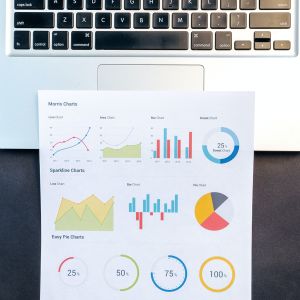
There are a variety of different financial tools that can be used in the forex market. In this blog post, we will discuss some of the most common ones. The first tool is called a margin account. This allows traders to borrow money from their broker to increase their buying power. The second tool is a stop loss order. This order is placed with a broker to protect against large losses if the trade goes against you.
What Are the Different Types of Financial Management Tools?
There are four main types of financial management tools:
- Asset Allocation
- Investment Selection
- Portfolio Construction
- Risk Management
Each type of tool has its purpose and can be used in different ways to help you reach your financial goals. Let's take a closer look at each one.
Asset Allocation
This tool helps you determine how to spread your money across different asset classes, such as stocks, bonds, and cash. The goal is to choose an allocation that meets your return objectives while also taking into account your risk tolerance. For example, someone who is retired or close to retirement might have a lower tolerance for risk and therefore would allocate more of their portfolio to cash and bonds.
Investment Selection
This tool helps you choose individual investments, such as stocks, mutual funds, and ETFs. When selecting investments, you'll want to consider factors such as your goals, risk tolerance, and time horizon. For example, if you're investing for retirement, you'll likely have a different investment mix than someone who is investing for a short-term goal.
Portfolio Construction
This tool helps you create a diversified portfolio that meets your return objectives while also taking into account your risk tolerance. A diversified portfolio includes a mix of asset classes and investment types. The goal is to choose a mix of investments that will work together to help you reach your financial goals.
Risk Management
This tool helps you manage the risk in your portfolio. Risk management is important because it can help you avoid large losses and protect your capital. There are a variety of different risk management techniques, such as stop-loss orders and position sizing.
What are the financial tools?
There are a variety of different financial tools that can be used in the forex market. In this blog post, we will discuss some of the most common ones.
Margin Account
A margin account allows traders to borrow money from their broker to increase buying power. This tool can be useful for those who want to trade larger amounts than they have available in their account. However, it is important to note that margin accounts come with risks, as you may be required to pay back more than you borrowed if the trade goes against you.
Stop Loss Order
A stop loss order is an order placed with a broker that protects against large losses if the trade goes against you. This can be a helpful tool for those who are worried about losing more money than they are comfortable with. It is important to remember that stop loss orders do not guarantee that your losses will be limited, but they can help limit your risk.
Payroll Management
Payroll management is the process of managing employee compensation. This includes things like setting up direct deposit, issuing paychecks, and managing taxes. Payroll management can be a complex task, but there are several tools available to help make it easier.
Time Clock
A time clock is a tool that allows employees to track their hours worked. This can be helpful for managers who want to ensure that employees are being paid for the hours they work. It can also help employees keep track of their hours worked so that they can be sure they are being paid correctly.
Payroll Software
Payroll software is a tool that helps managers manage employee compensation. This includes things like setting up direct deposit, issuing paychecks, and managing taxes. Payroll software can make the payroll process easier and more efficient.
Accounting Software
Accounting software is a tool that helps businesses track their finances. This includes things like invoicing, tracking expenses, and managing payroll. Accounting software can help businesses keep track of their finances and make sure they are on track.





Post a comment